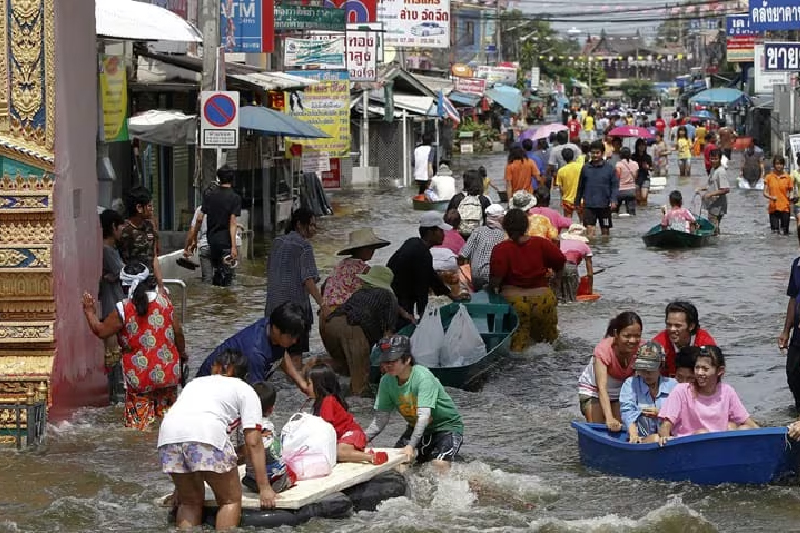
The 2011 floods in Thailand were one of the most devastating natural disasters in the country’s history
The 2011 floods in Thailand were one of the most devastating natural disasters in the country’s history, affecting millions of people and causing widespread damage to infrastructure, agriculture, and livelihoods. Among those severely affected were migrants living and working in Thailand, whose already precarious circumstances were further exacerbated by the disaster. This article explores the specific challenges faced by migrants during the 2011 floods and the long-term implications for this vulnerable population.
Background
Thailand experienced unusually heavy monsoon rains in 2011, leading to flooding in several regions of the country, including the capital city of Bangkok. The floods, which lasted for several months, submerged vast areas of land, displaced millions of people, and caused significant economic losses. Migrants, who often occupy low-income jobs in construction, agriculture, and manufacturing sectors, were particularly vulnerable to the impact of the disaster.
Immediate Impact on Migrants
Migrants living in low-lying areas or informal settlements were disproportionately affected by the floods. Many lost their homes, belongings, and sources of income as businesses shut down and agricultural lands were submerged. Lack of access to information and communication barriers compounded the challenges faced by migrants, leaving them stranded without assistance or support.
Health and Safety Concerns
The floods posed serious health risks to migrants, including exposure to contaminated water, inadequate sanitation facilities, and the spread of waterborne diseases. Migrants living in overcrowded shelters or temporary evacuation centers were especially vulnerable to outbreaks of illnesses such as dengue fever, cholera, and leptospirosis. Limited access to healthcare further exacerbated their vulnerability.
Economic Disruption
For many migrants, the floods meant loss of livelihoods and economic instability. Those employed in the informal sector, such as street vendors and day laborers, saw their income disappear overnight as businesses closed down or were damaged by the floods. The disruption of supply chains also impacted industries reliant on migrant labor, further exacerbating the economic hardship faced by this population.
Legal and Social Exclusion
Migrants in Thailand often face legal and social exclusion, with limited access to healthcare, education, and social services. During the floods, many migrants encountered barriers in accessing relief and assistance due to their legal status or language barriers. Fear of deportation or detention deterred some migrants from seeking help, exacerbating their vulnerability and isolation.
Long-Term Implications
The 2011 floods had long-term implications for migrants in Thailand, exacerbating existing vulnerabilities and deepening socio-economic inequalities. Many migrants struggled to rebuild their lives in the aftermath of the disaster, facing challenges such as housing insecurity, unemployment, and debt. The lack of comprehensive disaster preparedness and response mechanisms for migrants highlighted the need for more inclusive policies and interventions.
The 2011 floods in Thailand had a profound impact on migrants, exacerbating their vulnerabilities and exposing the inadequacies of existing support systems. Addressing the needs of migrants during disasters requires a comprehensive approach that includes access to information, healthcare, and social services, as well as recognition of their rights and contributions to society. Moving forward, it is imperative for policymakers, civil society organizations, and the international community to prioritize the protection and inclusion of migrants in disaster preparedness and response efforts. Failure to do so not only jeopardizes the well-being of migrants but also undermines the resilience of communities and the broader goal of sustainable development.







